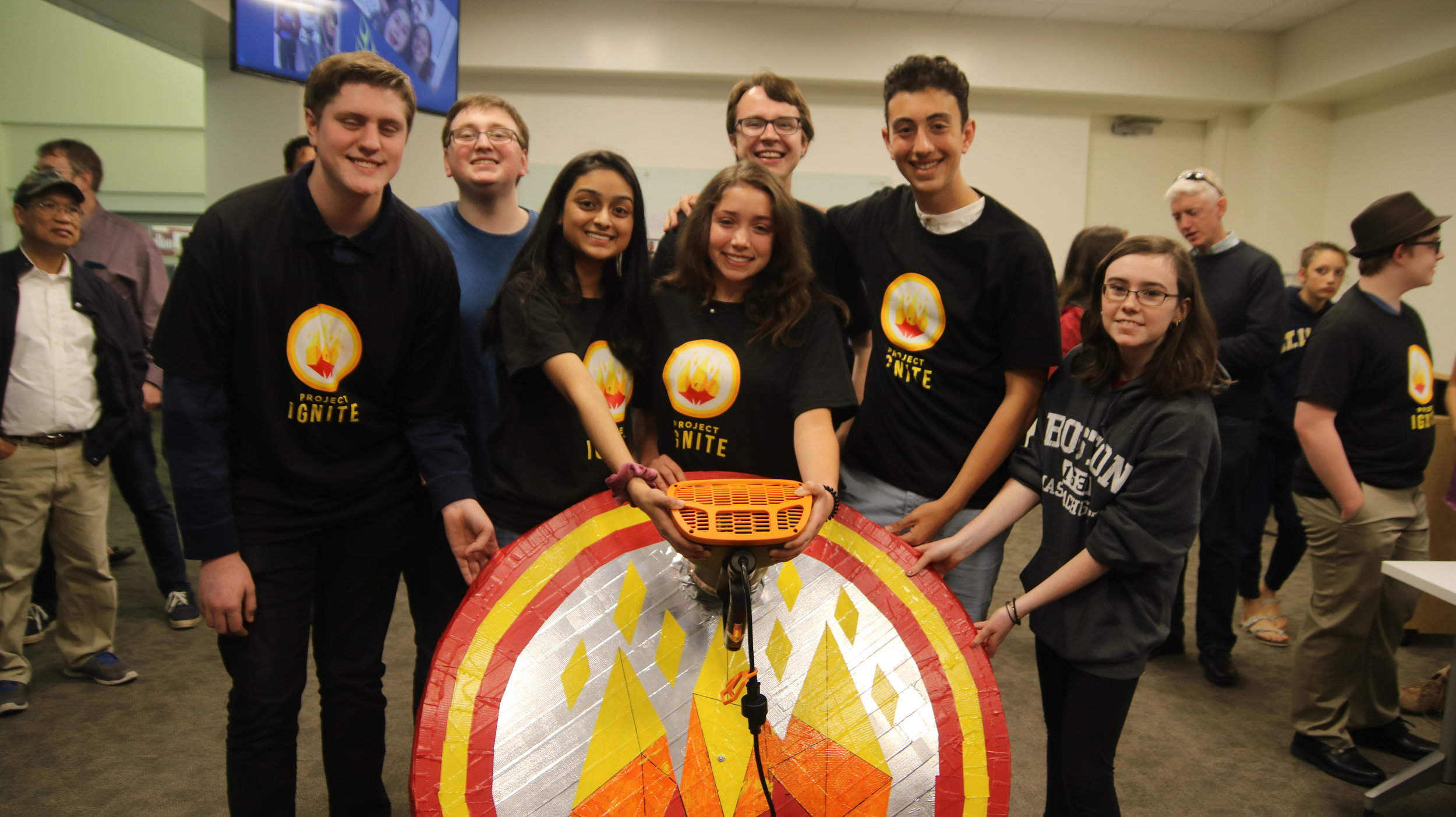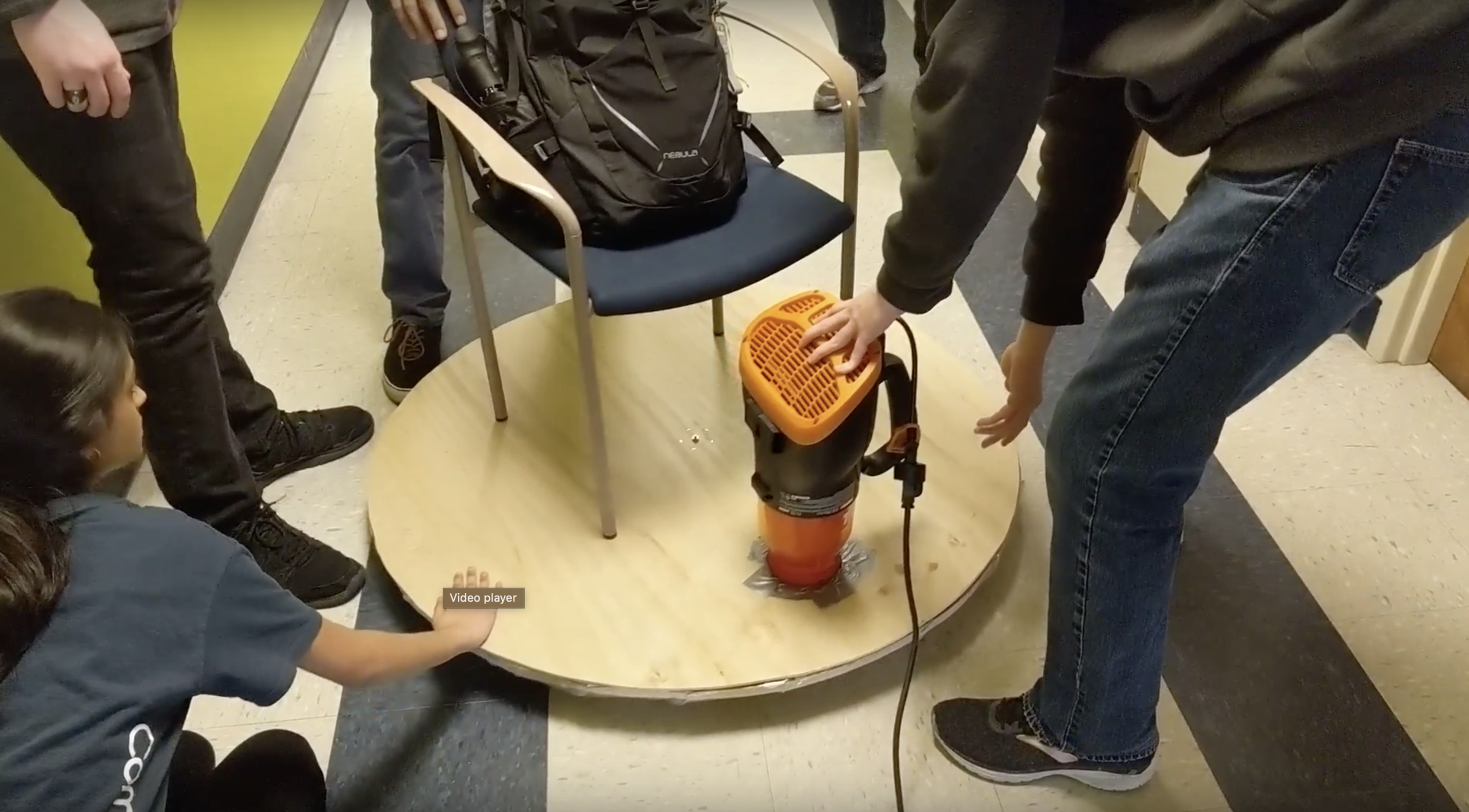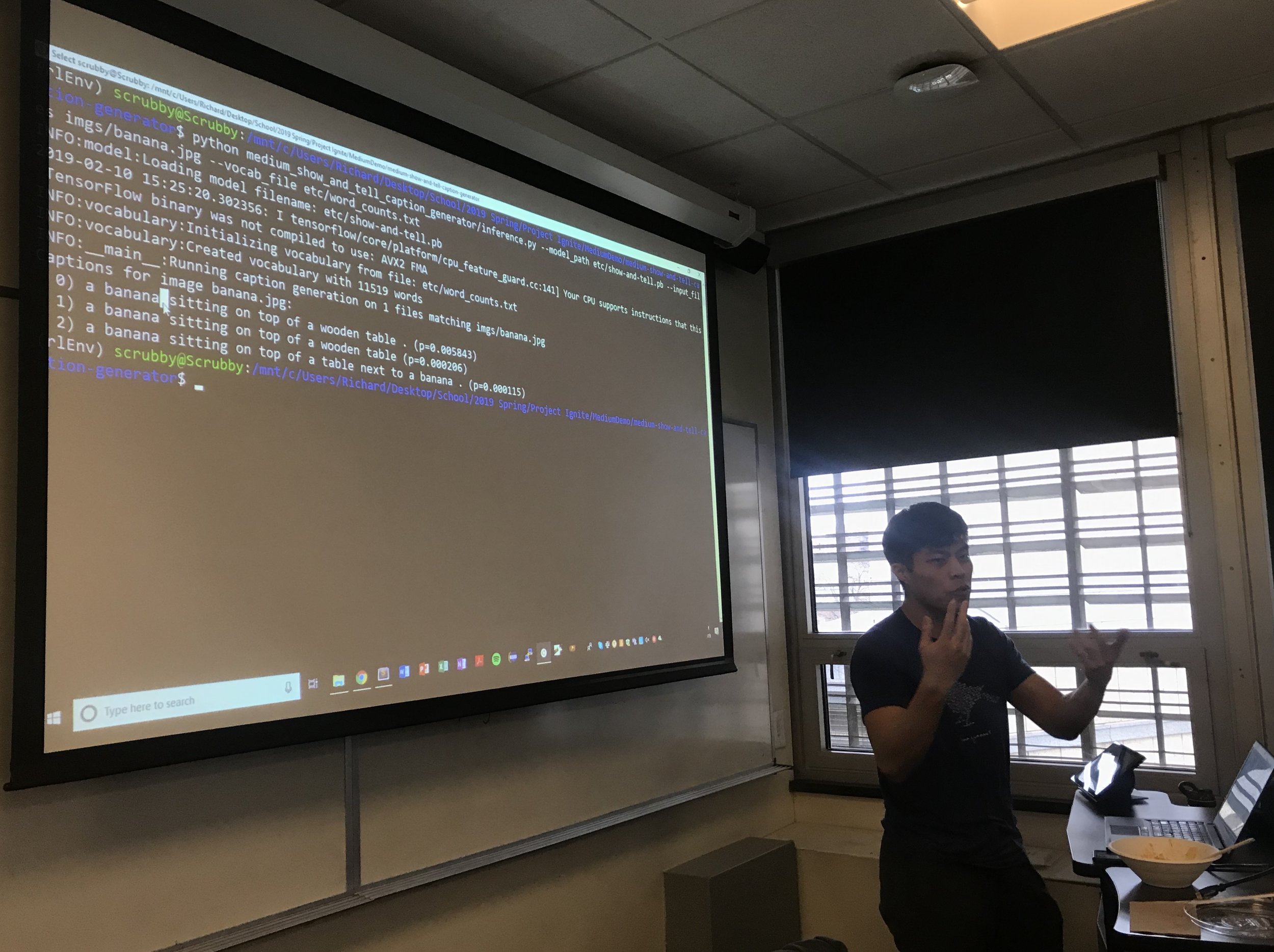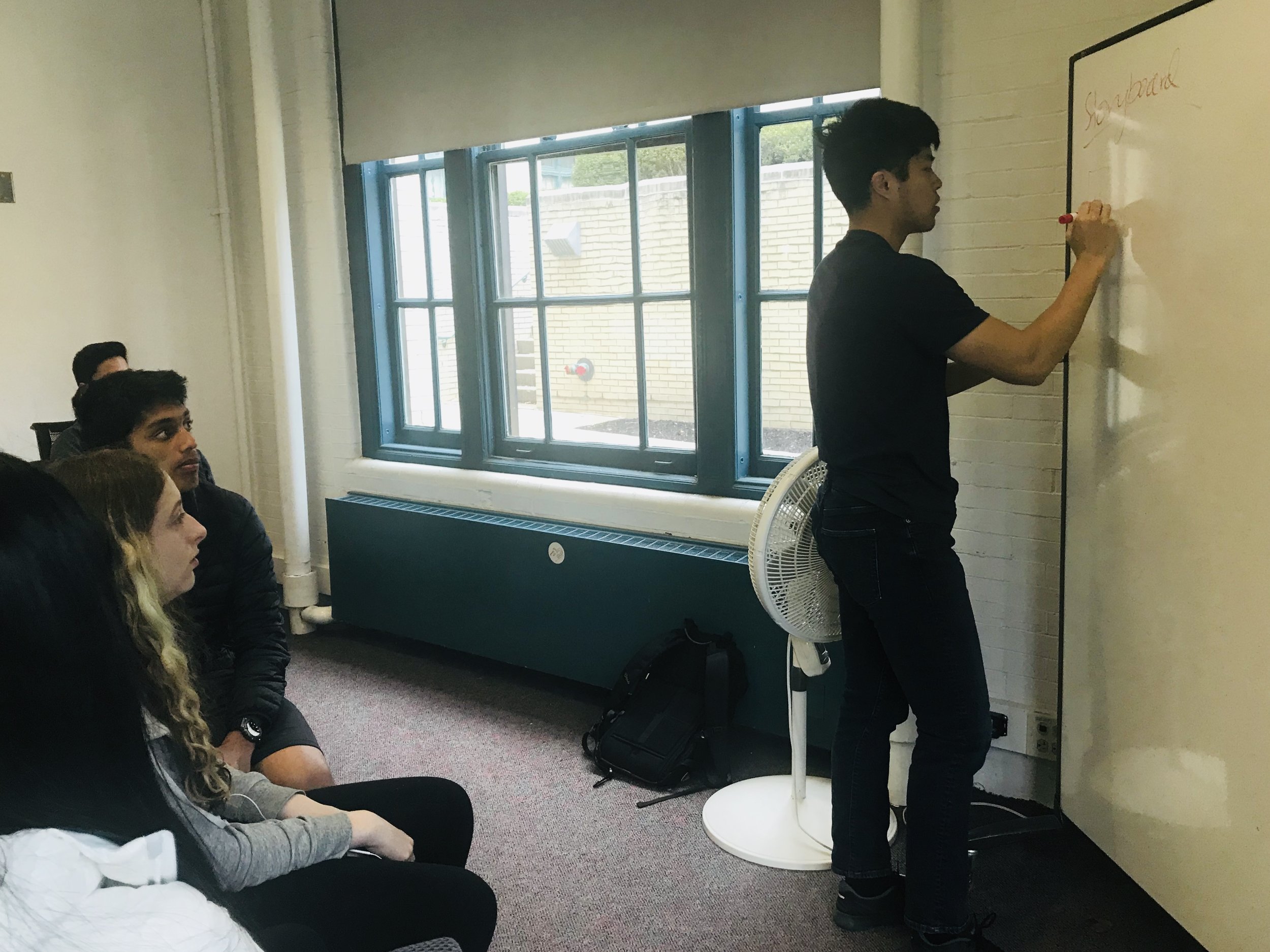Project Archive 2019
Project Archive: Spring 2019
(Click the photos to see a slideshow!)
Design a new sport
Project Advisors: Ben Kaplan, Jonathan Huang
Our group initial task was to "Design a New Sport" but after brainstorming and based on what the students were actually interested in, we decided as a team to actually "Design a new Party Game." Once we had a solid idea about what direction we wanted to go in, we decided to test some party games like exploding kittens and Secret Hitler to see what made good party games. We had quite a few ideas for games, one involving turn-based exploration and scavenging and another involving different roles on a team. After play-testing and receiving feedback, the group improved on their initial idea and decided on our game known as "Seige" where two teams participate in different challenges to see who can defeat the other team's king, who is the captain of their team.
Overall, I think it was a pretty fun and educational experience, both for us as well as the students. We learned more about game design and the overall brainstorm process and the end product was pretty nice with the box and cards we designed and ordered. Ending up with an actual product that people could play made the project advisors as well as the students very proud.
Fitbit Vitals
Project Advisors: Nila Ramaswamy, Anoop Bhat, Joanne Tsai
The goal of this project was to provide a simple, effective technique to reduce stress in anxiety inducing situations via a wearable device. Students modified a Fitbit functionality to be able to assist in stressful and emergency situations. Students learned about the app development process and programming.
Misconceptions
Project Advisors: Jacob Neumann, Tyler Sikov
The original goal of this project was to conduct physical experiments to test out ideas, and maybe "eradicate" some "misconceptions". After a few workshops of experiments with parachutes, balloons, and fans, this project evolved into an effort to build a small hovercraft. Over the last several workshops, we researched, designed, and built a 44-inch diameter hovercraft (affectionately known as "Henry") capable of lifting an adult person and gently gliding them across several different surfaces.
Along the way, we studied physical concepts like lifting capacity, weight, force, and velocity; we got experience assembling a mechanism capable of directing and containing airflow; and we went through the process of building scale models and prototypes to test out our designs.
Music visualization
Project Advisors: Oscar Dadfar, Jonathan Jenkins, Dylan Vanmali
We wanted to extract the most common and recognizable features in music such as rhythm, tempo and volume to create a visual setting that could accompany any song regardless of genre. Students gained hands on experience with analyzing audio tracks, rendering graphics, and engineering a holographic display. Putting these all together gave viewers a holographic music visualization that could be viewed from any angle. Since the music analysis we wrote for our program was real-time, we could plug in any song at any time and get a light show to match the song.
Machine Learning
Project Advisors: Richard Gu, Christina Ma
Our group’s original topic was style transfer and we first learned some basic background about machine learning and visual analysis. We wanted a feasible MVP that allows us to further learn about machine learning and practice on programming, so we brainstormed a lot of interesting ideas about not just style transfer, but many other ML applications. We researched on existing ML frameworks and APIs, and we decided to reproduce an image caption generator for grocery stuff based on an open-source project. During the process, we learned a lot of new knowledge about Xcode, Swift, prototyping, IOS app development, and image processing, and we also exercised soft skills like team communication and job division.
Environment
Project Advisors: Matthew Ok, Robin Kuo
Students in this project group brainstormed and researched different environmental issues that they found important and concerning. After learning more about each issue, the group picked one and designed a product intended to help educate households and make it easier to incorporate eco-friendly habits into their daily routine. The product was a self-sorting trashcan and recycling bin that would distinguish between metals, plastics, paper, and landfill trash through a variety of sensors. Through the project, students gained experience with the design process, programming, electronics, and laser-cutting.






















